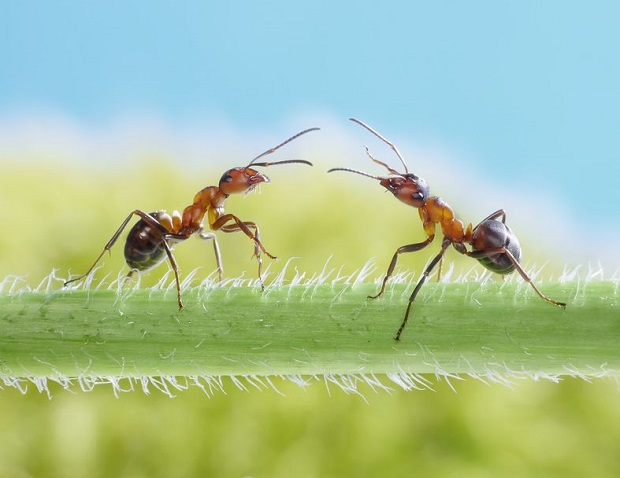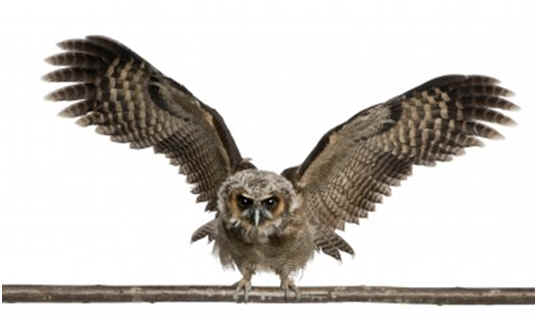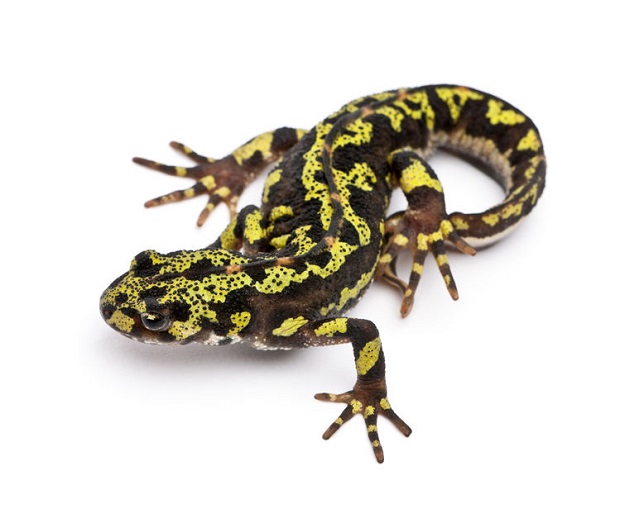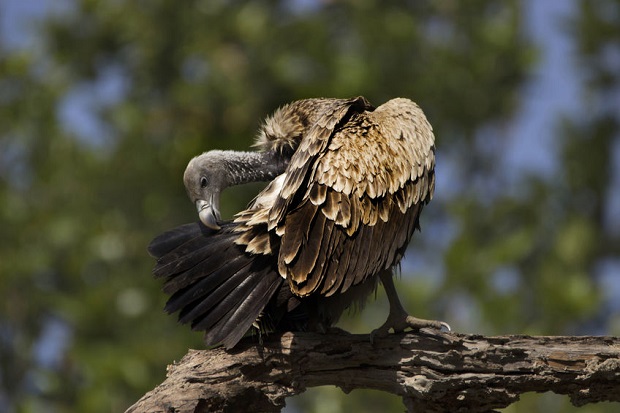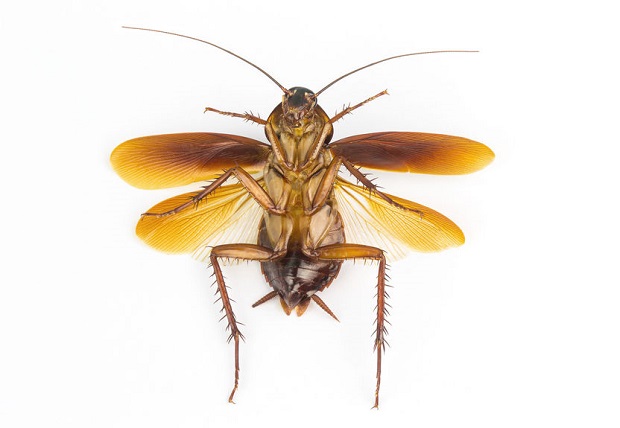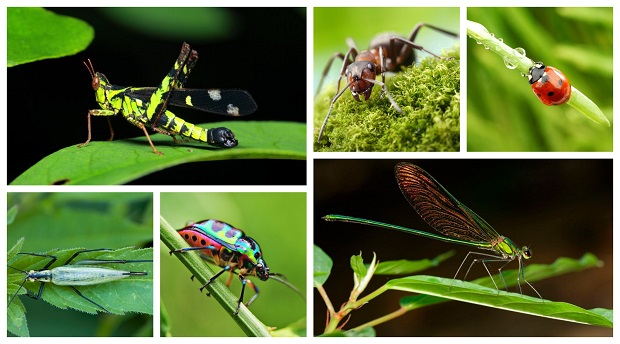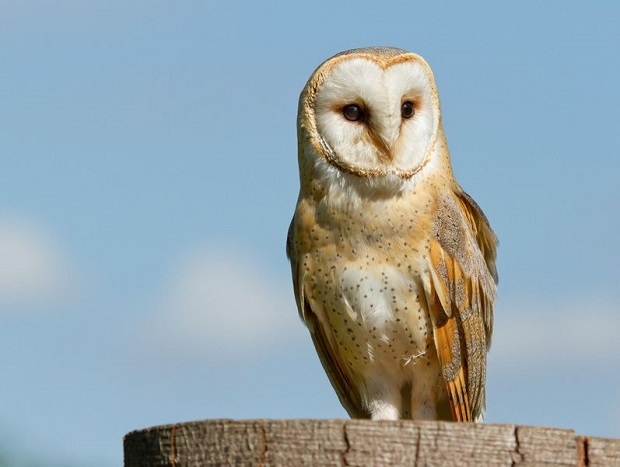
Discover answers to the most popular questions about barn owls, including classification, identification, habitat and range, hunting and diet, behavior, and conservation status.
Classification
How Are Barn Owls Classified?
Phylum: Chordata
Subphylum: Vertebrata
Class: Aves
Order: Strigiformes
Family: Tytonidae
Genus: Tyto
Species: Tyto alba
Identification
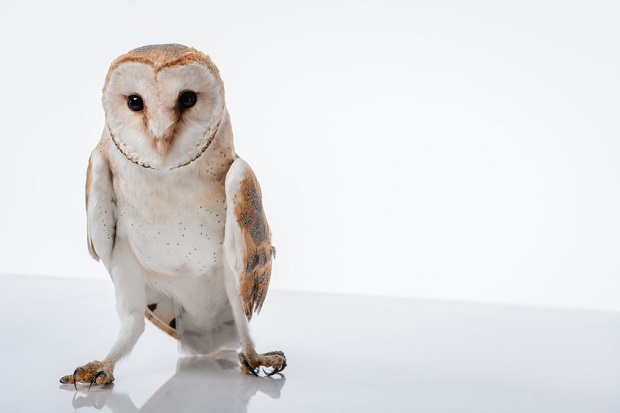
What Does a Barn Owl Look Like?
The back of the barn owl is a mottled shade of black, brown, tan, and white, while their undersides are tan white with black spotting. Its facial disk is white and heart-shaped. [See image above]
Why Don’t Owls Have Bright Plumage Like Other Birds?
In nature, an animal’s characteristics, such as color, usually serve a purpose. In the case of the brightly colored bird, which is usually the male of the species, this characteristic helps to attract the female bird, which in turn helps to propagate the species. The female, in contrast, has muted colors, which helps her remain inconspicuous when roosting. [Heinsohn]
Considering that the barn owl hunts in fields, marshes, and along the treeline, it is perfectly suited in color to easily glide over its hunting territory without being immediately conspicuous to its prey.
How Big Is a Barn Owl?
The size of the barn owl varies across the 28 subspecies. In general, the species is considered to be a medium-size owl, the female being slightly larger than the male. On average, the owl measures between 12.6-15.7 inches and weighs 1-1.3 pounds. [Marti] [FWS]
Habitat and Range
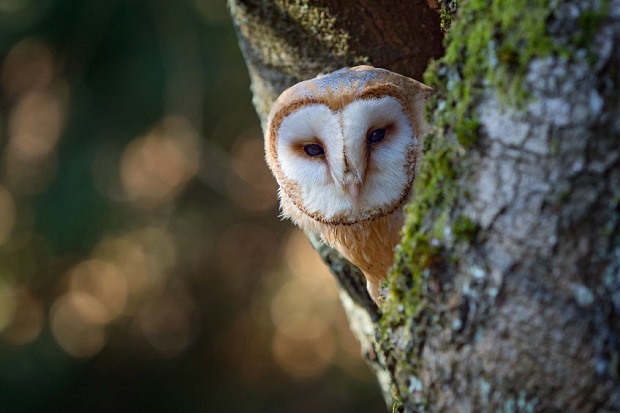
Where Do Barn Owls Live?
Barn owls like to nest next to wide and open areas such as fields or marshes that will provide ample food sources. They will make a home of nearly any suitable hollow cavity, such as in trees, cliffs, and caves, but will also nest in little trafficked manmade structures such as barns, haystacks, and even nest boxes. [Marti]
Are Barn Owls Only Found in the United States?
With the exception of Antarctica, barn owls can be found across the globe. Where there is suitable habitat, there are barn owls. They are, in fact, the most geographically widespread of all owl species. [UM]
Hunting and Diet
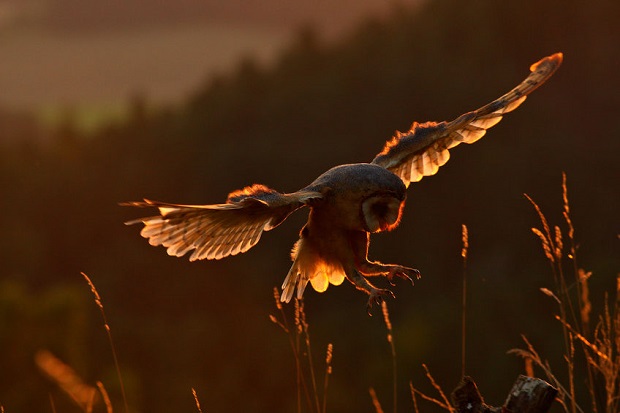
What Do Barn Owls Eat?
Like all owls, barn owls are birds of prey, making a meal of what is available to them in the ecosystem. They feed primarily on small mammals that are active at night, such as mice, voles, lemmings, and other rodents. Studies have demonstrated that the barn owl prefers the vole specifically when available. They will also feed on other birds, amphibians, reptiles, and large insects when necessary. [Colvin]
Interestingly, barn owls will only feed on live prey.
Owls do not digest food in the same manner that we do. They swallow their food whole, and the parts that cannot be digested, the bones, teeth, fur, etc., are compacted into pellets and coughed up.
Will a Barn Owl Eat a Cat?
As carnivores, a barn owl will prey on any animal that it can subdue. It tends to choose its prey based on its weight, hunting smaller vermin rather than large ones. In an Ohio study of the common barn owl’s food habits and preferred prey, the favored prey was the meadow vole at an average weight of 2.1 ounces. The owls tended to avoid the larger voles that average 7-17 ounces. [Colvin]
Following this logic could mean that a kitten could be in danger of becoming prey. At an average of three-and-a-half ounces, a newborn kitten could certainly fall prey to a barn owl. [ASPCA]
A full-grown cat is actually more of a threat TO a barn owl. At an average of 8-10 pounds, the average domestic cat far outweighs the average-sized one-pound barn owl. [VCA Animal Hospital] In fact, the Ontario Ministry of Natural Resources lists cats as a threat to the barn owl along with other predators such as raccoons and great-horned owls. [OMNR]
How Do Barn Owls Catch Their Prey?
The barn owl uses its low-light vision to hunt, but its hearing is the primary sense when it comes to hunting. Its facial disk funnels sound into its ears located asymmetrically on either side of the head, allowing the owl to locate its prey before it even sees it.
Like all owl species, barn owls fly silently due to the structure of the thickly coated downy wings that have soft, serrated edges with flexible fringe on the trailing edge, which work to reduce turbulence.
In fact, barn owls are such good hunters they have been introduced to some oceanic islands to control the rodent population. [UM]
Do Barn Owls Have Predators?
Baby owls, or owlets, may fall prey to raccoons, snakes, and short-tailed weasels.
Adult barn owls do not have many predators. Though relatively small, these birds extend their wings and hiss at anything perceived as a predator, scaring off many. The great horned owl will sometimes feed on the barn owl, and the smaller barn owls of Western Europe sometimes fall prey to other birds of prey such as eagles, buzzards, falcons, and other owls. [UM]
Behavior
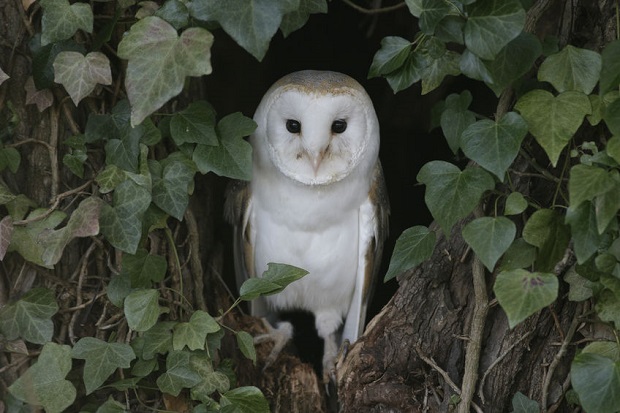
Are Barn Owls Nocturnal?
Generally speaking, barn owls are considered to be nocturnal, but that doesn’t mean that you will never see them at other times of the day. They are frequently seen hunting at dawn or dusk, which also makes them crepuscular. You may even see a barn owl during the day if its prey is scarce and it has not sufficiently stockpiled during the evening. [BOCN]
Do Barn Owls Migrate?
Barn owls are not migratory birds though young owls may fly over a thousand miles to find a suitable habitat after becoming independent of their parents. Once they have arrived, they usually remain there for the rest of their lives.
The fact that the barn owl does not generally migrate is unfortunate when it has chosen a location that is at the time seasonally suitable, then has a harsh winter. These birds are not suited for extreme winter conditions. They have a high metabolic rate compared to body size, meaning they require more food. They are also not well-insulated, meaning greater body heat loss. So a harsh winter can mean a high mortality rate. [Marti]
Conservation Status
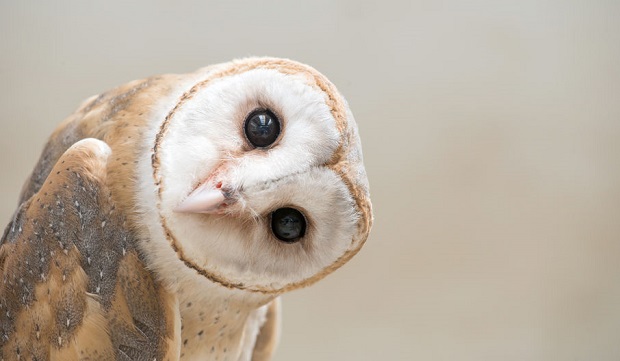
Are Barn Owls Endangered?
As of December 2013, barn owls in the United States are currently not protected by the Endangered Species Act of 1973 (ESA). The US Fish and Wildlife Service regulates the ESA with cooperation from the National Marines Fisheries Service. [FWS]
Though the barn owl has not been added to the federal list, several states have added it to their list of species deemed to be endangered for a particular geographical location. In the case of the barn owl, seven Midwestern states have listed the barn owl on their endangered species list, and nine others have listed it as a species of concern. [FSU]
(Current owls on the ESA endangered species list include the Anjouan scops owl, Morden’s owlet, giant scops owl, Madagascar red owl, Mexican spotted owl, northern spotted owl, and the Seychelles scops owl)
Resources
Marti, C. 1992. Barn Owl. Pp. 1-15 in A Poole, P Stettenheim, F Gill, eds. The Birds of North America, Vol. 1. Philadelphia: The Academy of Natural Sciences; Washington DC: The American Ornithologists’ Union
http://bna.birds.cornell.edu/bna/species/001/articles/introduction
Heinsohn, R; Scientific American
Why Are Male Birds More Colorful Than Female Birds?
http://www.scientificamerican.com/article.cfm?id=why-are-male-birds-more-c
University of Michigan Museum of Zoology
Tyto alba
http://animaldiversity.ummz.umich.edu/accounts/Tyto_alba/
Colvin, B; Ohio Journal of Science
Food Habits and Prey Specificity of the Common Barn Owl in Ohio
1986; Volume 86, Issue 3
http://kb.osu.edu/dspace/bitstream/handle/1811/23134/v086n3_076.pdf?sequence=1
ASCPA
Newborn Kitten Care
http://www.aspca.org/pet-care/cat-care/newborn-kitten-care
VCA Animal Hospital
Weight Reduction in Cats
http://www.vcahospitals.com/main/pet-health-information/article/animal-health/weight-reduction-in-cats/391
Ontario Ministry of Natural Resources
Species at Risk: Barn Owl
http://www.mnr.gov.on.ca/en/Business/Species/2ColumnSubPage/MNR_SAR_BRN_OWL_EN.html
National Audubon Society
Audubon’s WatchList 2007 in taxonomic order by geographic region
http://birds.audubon.org/sites/default/files/documents/watchlist2007_printable_list_populations.pdf
Florida State University Cooperative Extension Service
Barn Owl: Tyto Alba
http://edis.ifas.ufl.edu/uw216
US Fish and Wildlife Service
Listing a Species as Threatened or Endangered
http://www.fws.gov/endangered/esa-library/pdf/listing.pdf
Barn Owl Conservation Network
Are Barn Owls Nocturnal?
http://www.bocn.org/factfile_detail.asp?id=45
Marti, C
Ghoulies and Ghosties and Ecological Studies
http://weberstudies.weber.edu/archive/archive%20A%20%20Vol.%201-10.3/Vol.%201/Marti.htm
